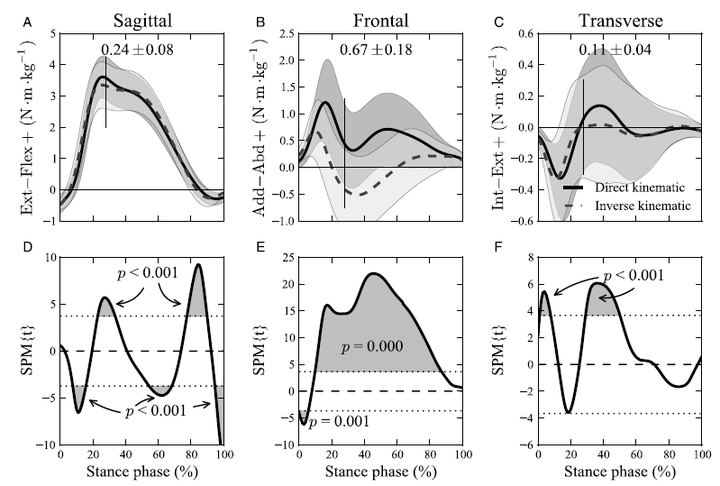Impact of Knee Modeling Approach on Indicators and Classification of Anterior Cruciate Ligament Injury Risk:

Abstract
The aim of this study was to determine whether using a direct kinematic (DK) or inverse kinematic (IK) modeling approach could influence the estimation of knee joint kinematics, kinetics, and ACL injury risk classification during unanticipated side cutting. Methods: The three-dimensional motion and force data of 34 amateur Australian rules footballers conducting unanticipated side-cutting maneuvers were collected. The model used during the DK modeling approach was an eight-segment lower body model with the hip, knee, and ankle free to move in six degrees of freedom. During the IK modeling approach, the same eight-segment model was used; however, translational constraints were imposed on the hip, knee, and ankle joints. The similarity between kinematic and kinetic waveforms was evaluated using the root mean square difference (RMSD) and the one-dimensional statistical parametric mapping (SPM1D). The classification of an athlete’s ACL injury risk was determined by correlating their peak knee moments with a predefined injury risk threshold. Results: The greatest RMSD occurred in the frontal plane joint angles (RMSD = 10.86-) and moments (RMSD = 0.67 T 0.18 NImIkgj1), which were also shown to be significantly different throughout the stance phase in the SPM1D analysis. Both DK and IK modeling approaches classified the same athletes as being at risk of ACL injury. Conclusions: The choice of a DK or an IK modeling approach affected frontal plane estimates of knee joint angles and peak knee moments during the weight acceptance phase of unanticipated side cutting.